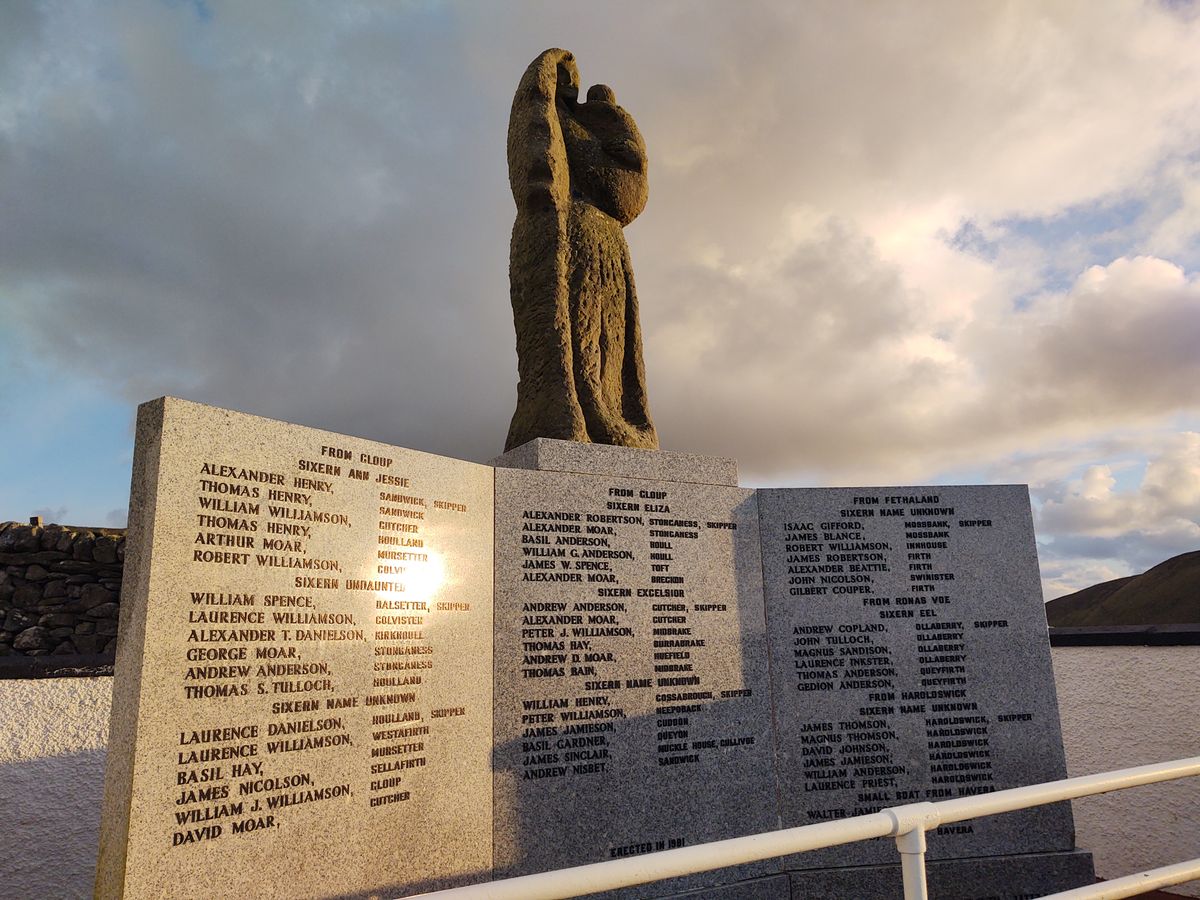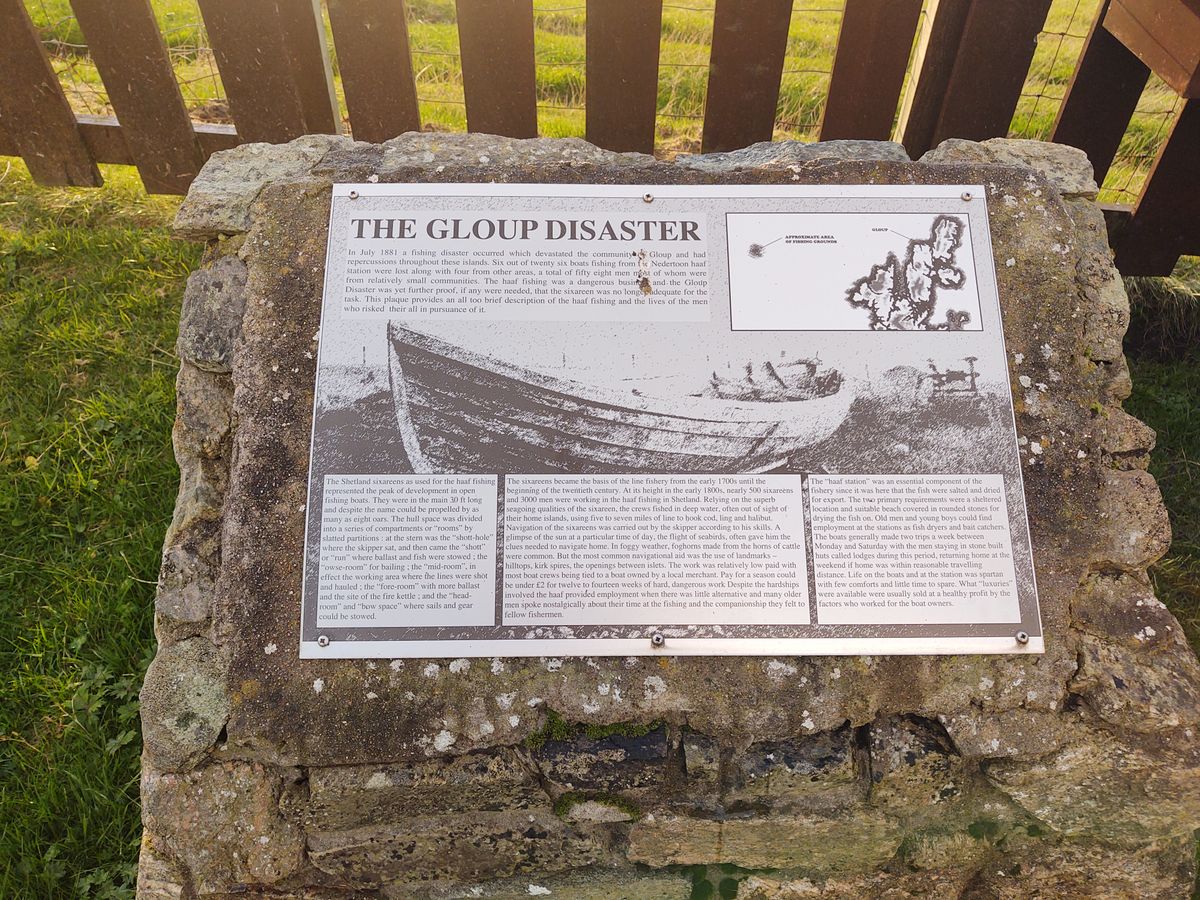About
On July 20, 1881, 10 fishing boats were caught in a storm while traversing the North Sea. Six of these were sixareens, a multi-compartment vessel widely used since the 1700s.
Sixareens were used on a collective type of fishery known as haaf, based on the actual haafs that were land stations where fish were processed and salted for export. The haaf system involved the entire town, as children, women, and older men assisted with the salting and drying process.
However, the sixareen type vessel was no longer fit for open water fishing and resulted in the Gloup Disaster. The disaster killed 58 Shetland fishermen and became associated with Gloup, as more than half of the men were originally from the town.
A century later, this memorial was constructed overlooking the Gloup Voe. It consists of a rock sculpture of a woman looking out to the sea while holding a baby, representing the 34 Gloup widows and their 85 fatherless children left behind following the disaster. Underneath the figure, the base features plaques with the name of all the victims.
Related Tags
Know Before You Go
While in a public space and visible at all times, the road leading to Gloup and the memorial can be difficult to navigate after dark.
Community Contributors
Added By
Published
May 26, 2021






















